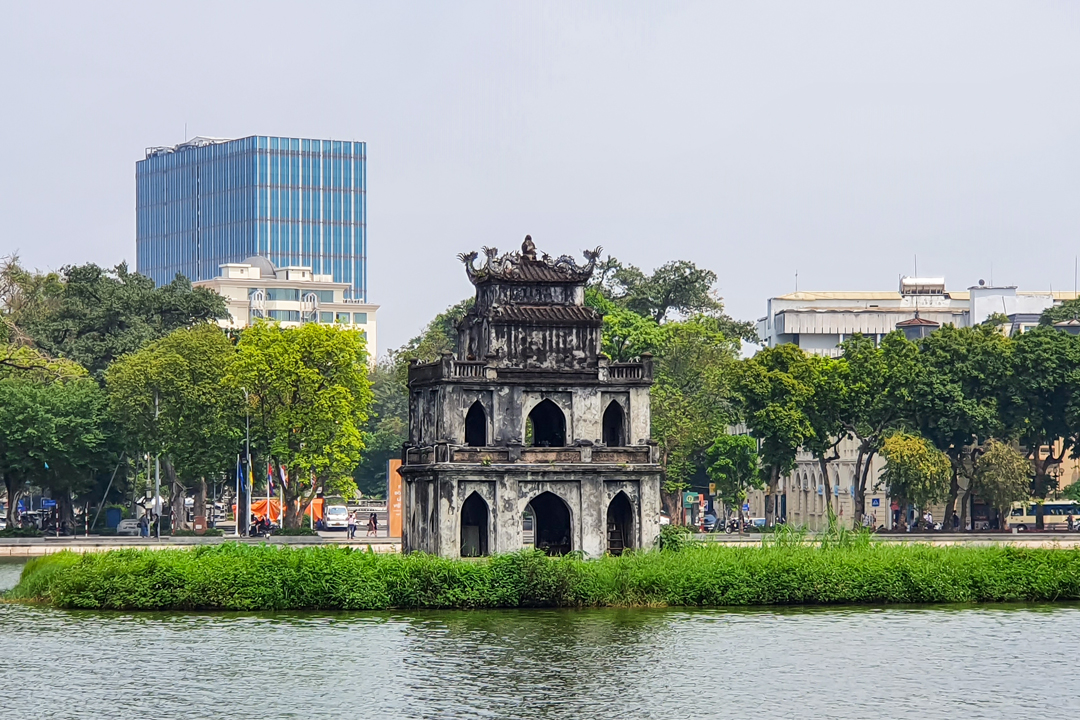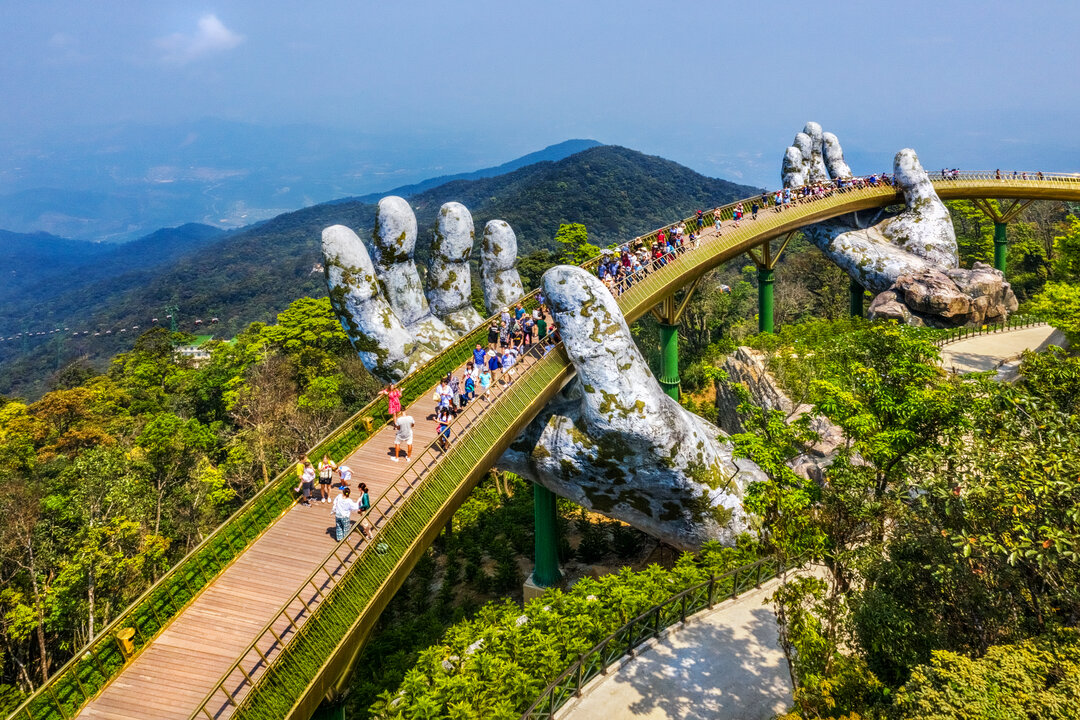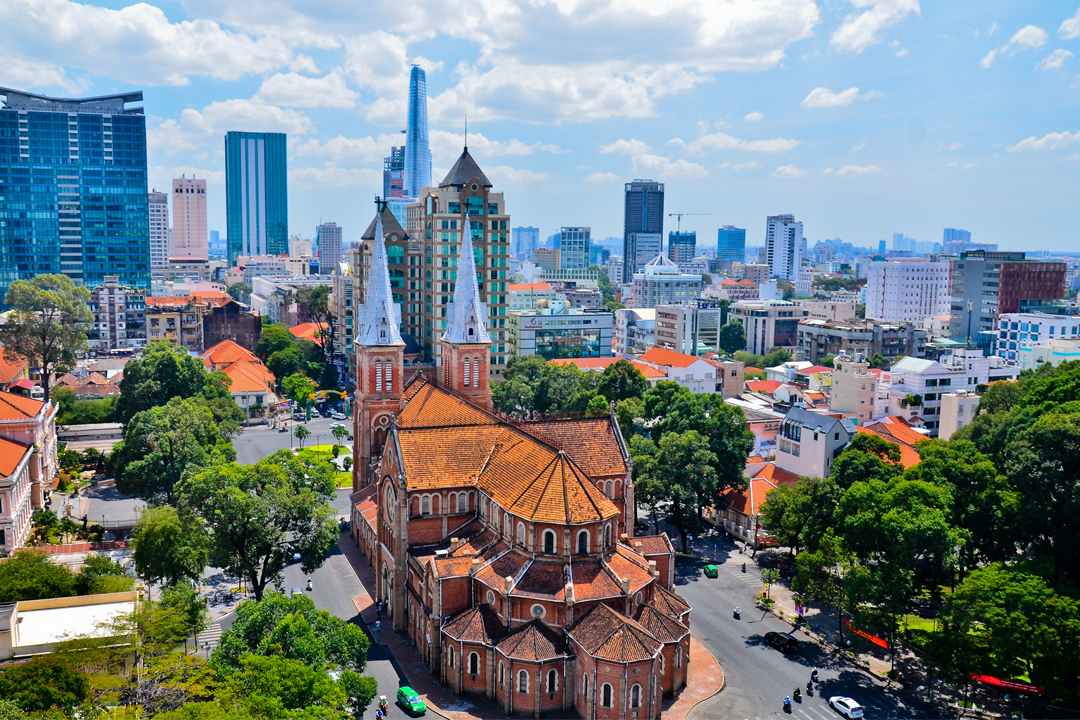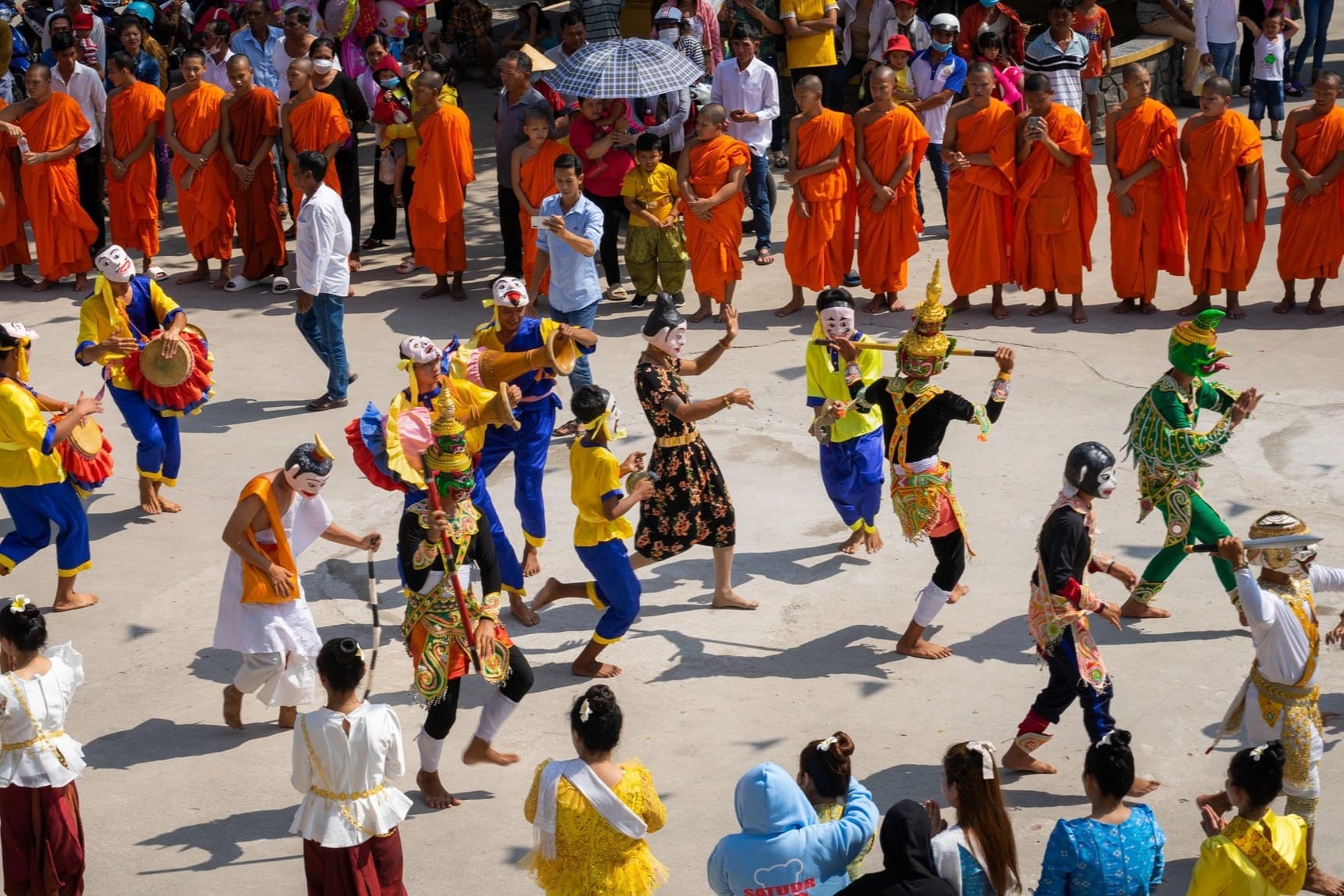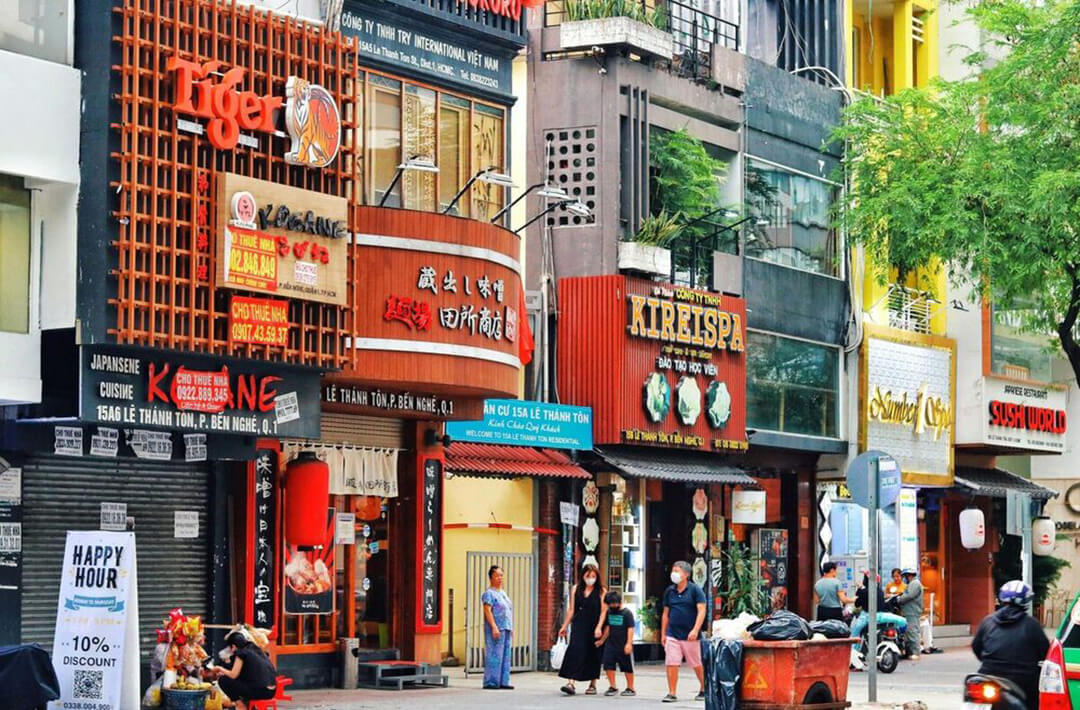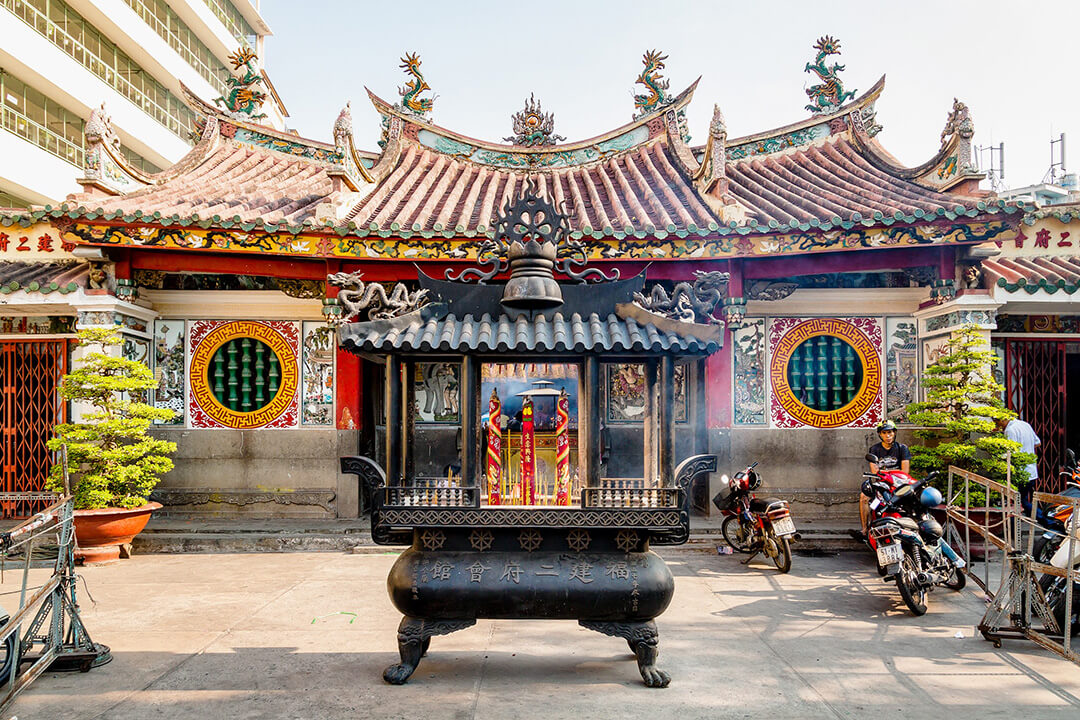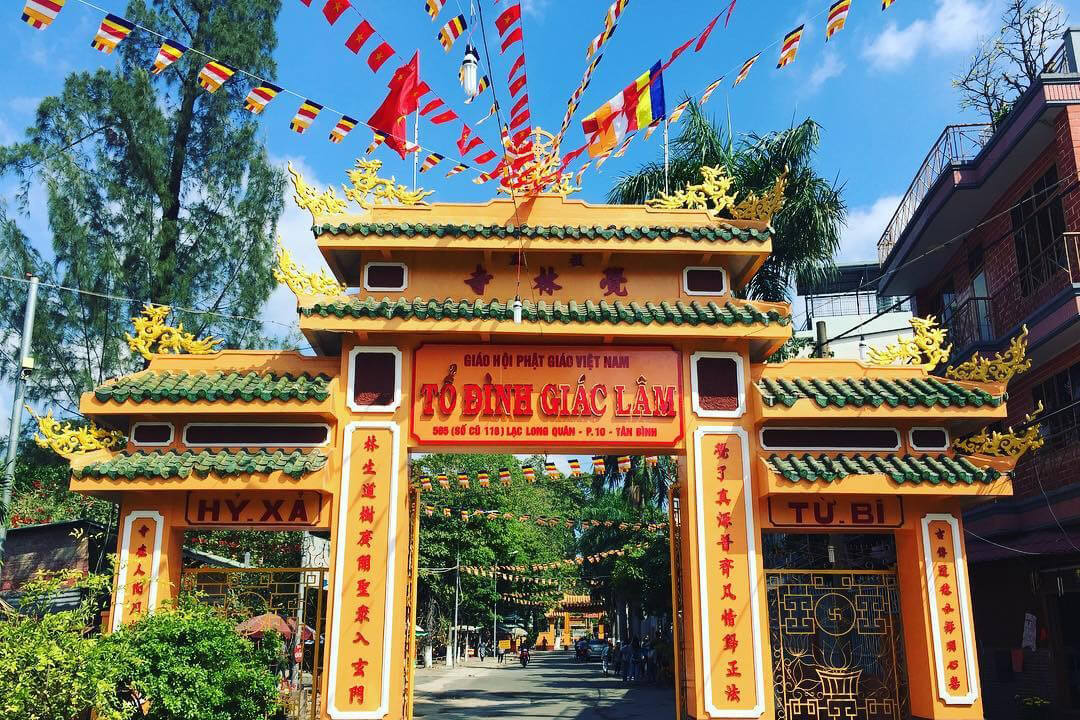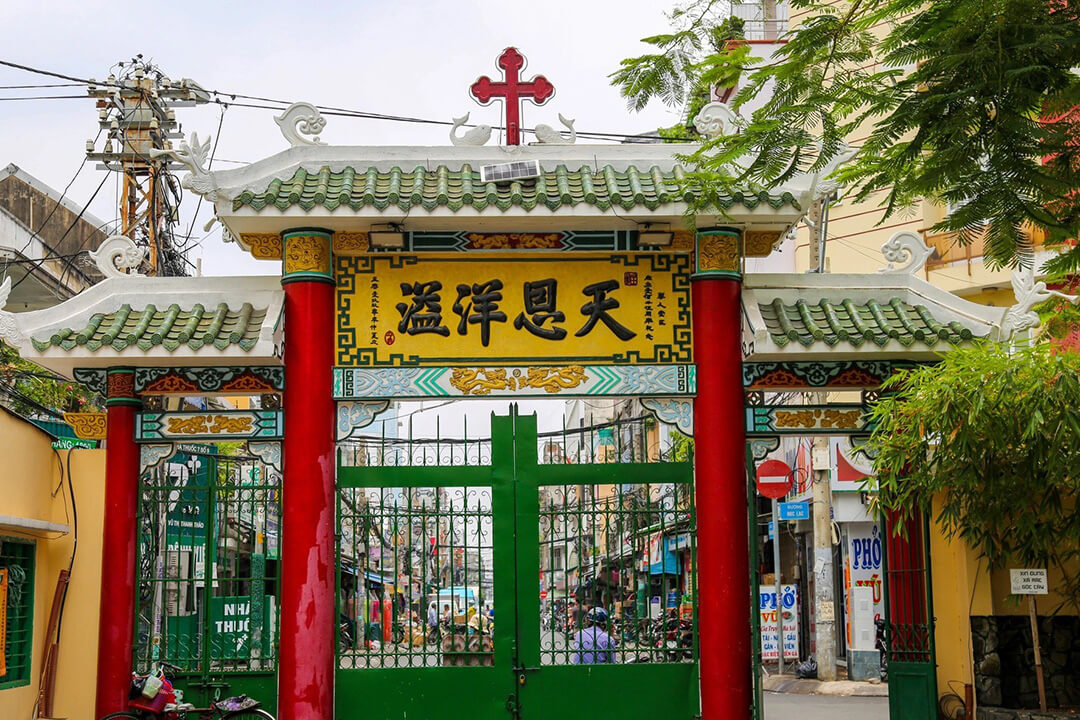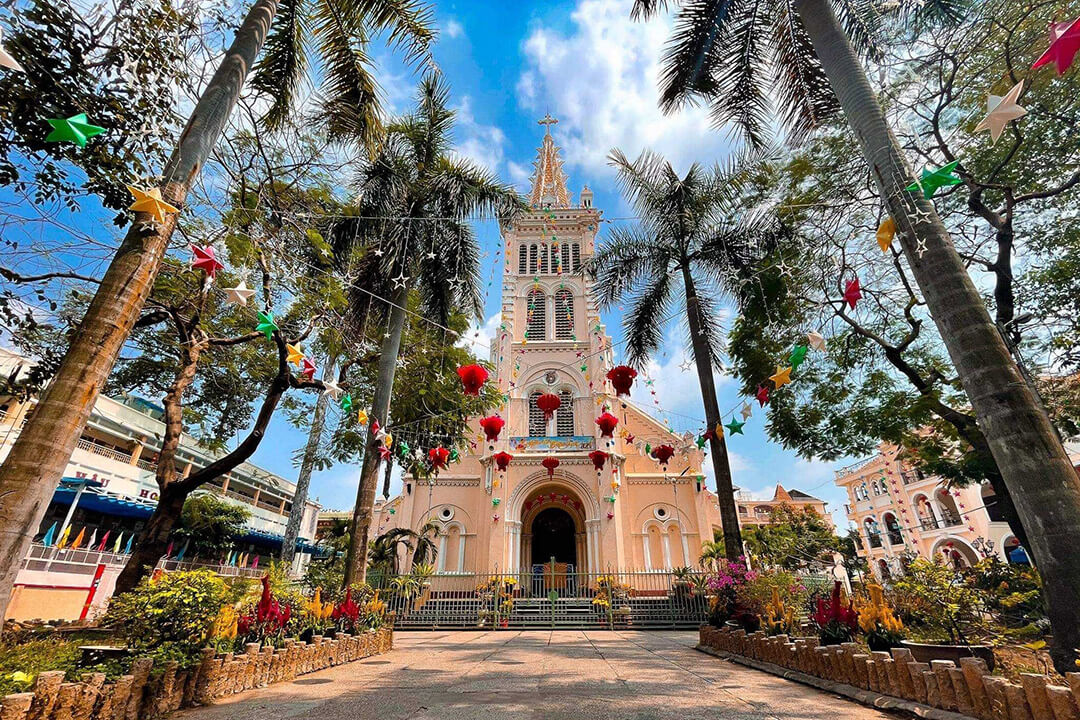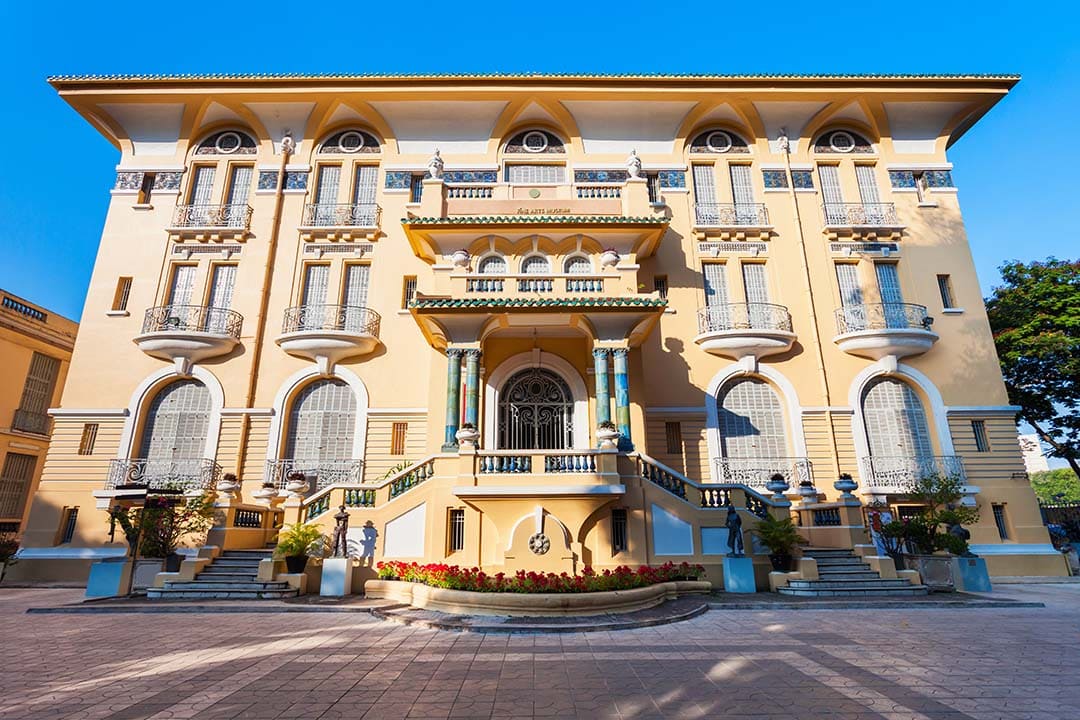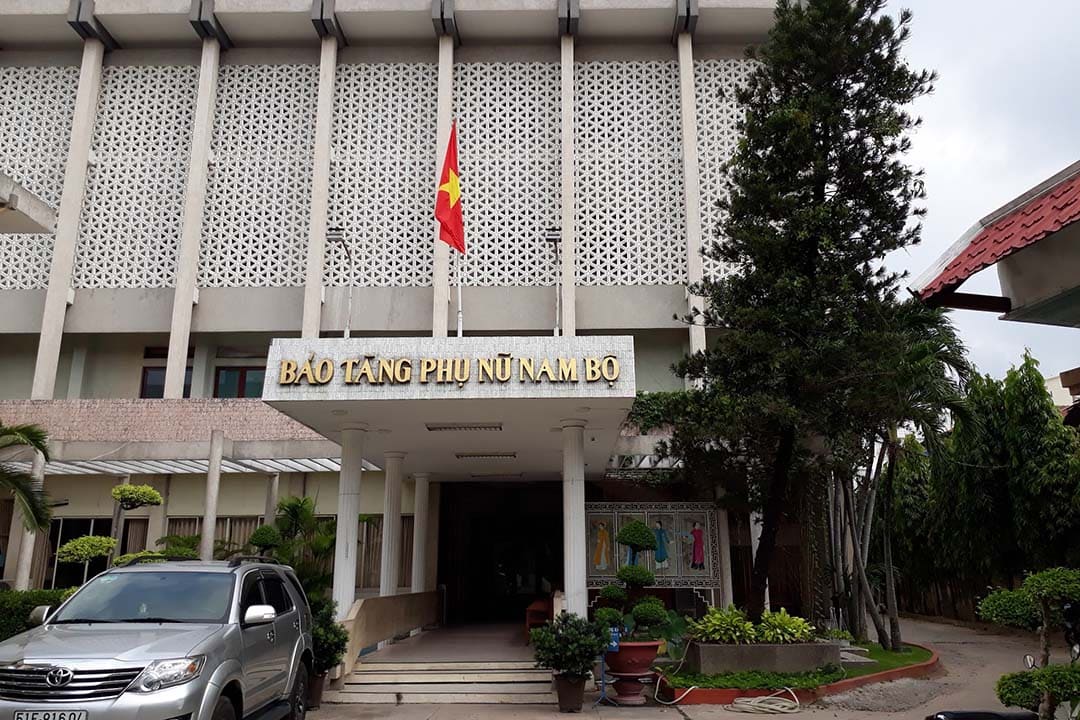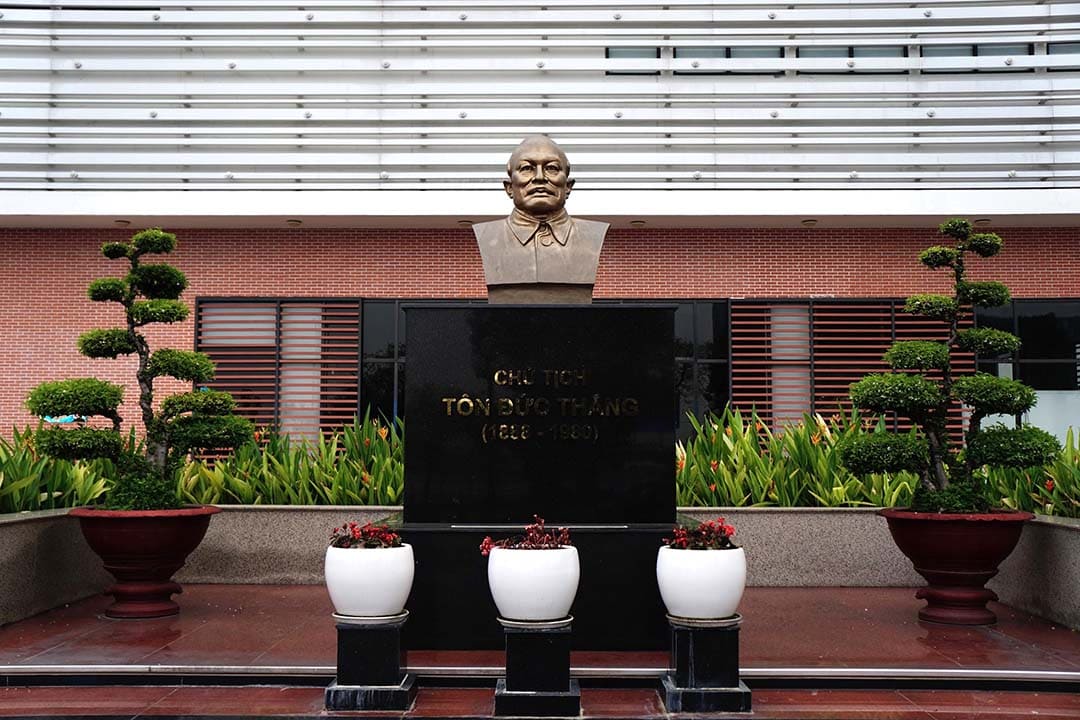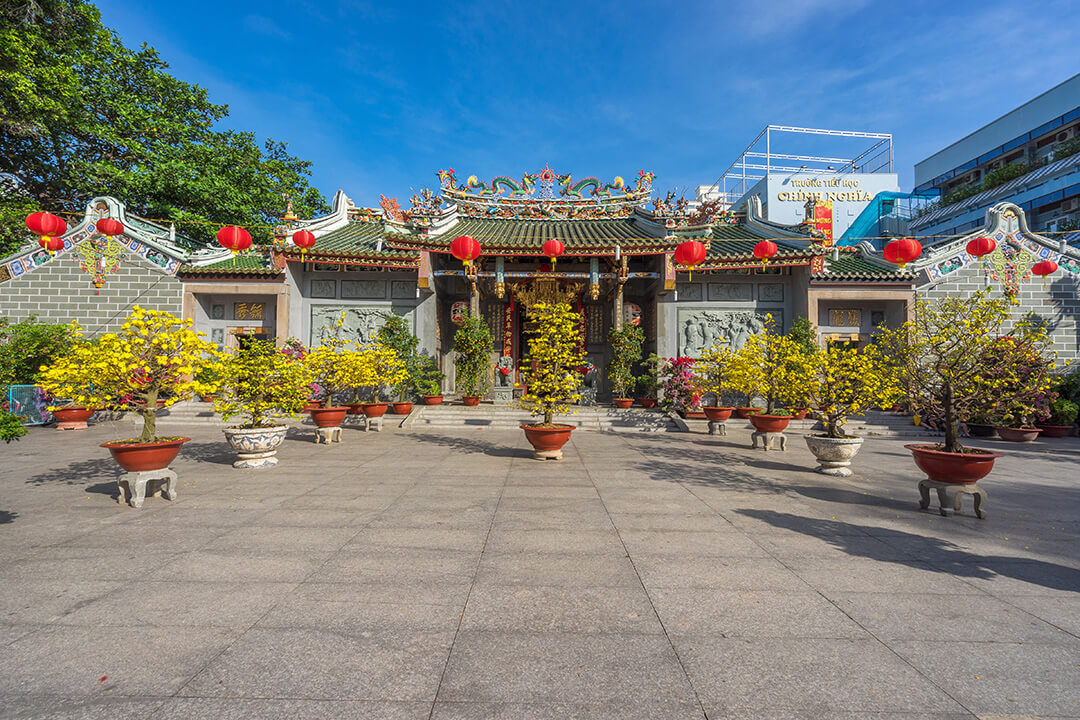Nov - 03 - 2025
Phuoc An Hoi Quan Pagoda is one of the most culturally significant and visually stunning temples in Ho Chi Minh City's vibrant Chinatown. Tucked away from the main tourist trail, this historic assembly hall offers a breathtaking glimpse into the spiritual and communal life of the city’s Chinese-Vietnamese community. Its vibrant colors, intricate details, and the thick, fragrant smoke of incense create an atmosphere that feels a world away from the bustling streets outside. In this complete GTrip guide, we'll walk you through its rich history, the powerful deities it honors, its unique architecture, and everything you need to know for a memorable visit.
Overview of Phuoc An Hoi Quan Pagoda
- Address: 184 Hong Bang Street, Cho Lon Ward (formerly Ward 12, District 5), Ho Chi Minh City
- Opening hours: 6:00 AM - 6:00 PM daily
- Entrance fee: Free
- Best time to visit: Early morning (6:00 AM - 9:00 AM) for a calm atmosphere with fewer visitors and beautiful light for photography.
Phuoc An Hoi Quan Pagoda, also known as Ong Bon Pagoda and formerly Minh Huong Pagoda, a name reflecting its roots in the Minh Huong community, stands as both a spiritual haven and a tribute to the rich heritage of the Fujian Chinese in Ho Chi Minh City. Renowned for its exquisite artistry and architecture, it was honored as a National Architectural and Artistic Monument in 1993. With its tranquil atmosphere and intricate decorations, this active place of worship is a must-visit for anyone seeking to explore the cultural soul of Cho Lon.
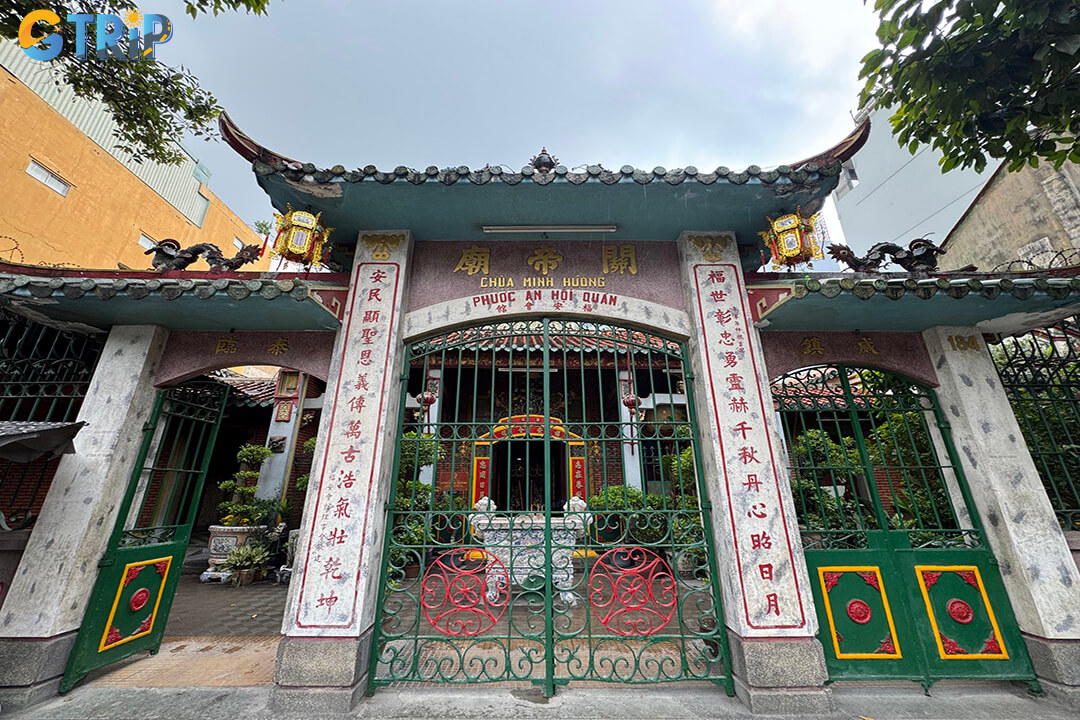
A sacred gem of Cho Lon, Phuoc An Hoi Quan blends stunning Fujian craftsmanship with deep spiritual heritage
Who does Phuoc An Hoi Quan Pagoda worship?
The primary deity venerated at Phuoc An Hoi Quan Pagoda is Quan Cong (also known as Guan Yu or Quan Van Truong), a revered Chinese general from the late Eastern Han Dynasty. Quan Cong is deified in Taoism and Chinese folk religion as a symbol of unwavering loyalty, integrity, righteousness, and bravery. For this reason, he is highly respected by businesspeople, police officers, and community leaders who pray to him for protection, success, and the strength to overcome obstacles with honor.
Alongside the commanding figure of Quan Cong, the pagoda also features altars dedicated to other important deities. Visitors will find shrines for Quan The Am Bo Tat (the Goddess of Mercy, Avalokiteshvara), who is sought for compassion and relief from suffering, and Ong Bon (The Guardian God of Happiness and Virtue). It reflects the syncretic blend of Taoist, Buddhist, and folk beliefs that characterize many Chinese temples in Vietnam.
History of Phuoc An Hoi Quan Pagoda
The history of Phuoc An Hoi Quan Pagoda is deeply intertwined with the story of the Chinese diaspora in Saigon. The pagoda was constructed in 1902 by the Minh Huong community, who were Chinese immigrants from the Fujian Province in China. The term Hoi Quan translates to "assembly hall", revealing the building's dual purpose. It was a sacred place of worship and a vital community center for people originating from the same region in China.
This assembly hall served as a social, cultural, and mutual aid hub for the Fujianese people. Here, they could conduct business, resolve disputes, celebrate traditional festivals, and maintain a connection to their ancestral homeland. The construction, funded by the community, was a statement of their presence and prosperity in their new home. Over the years, the pagoda has been carefully preserved, keeping its intricate carvings, statues, and sacred artifacts true to the founders’ artistic and spiritual legacy. Its recognition as a national monument underscores its importance as a repository of both architectural beauty and the living history of Saigon’s Chinatown.
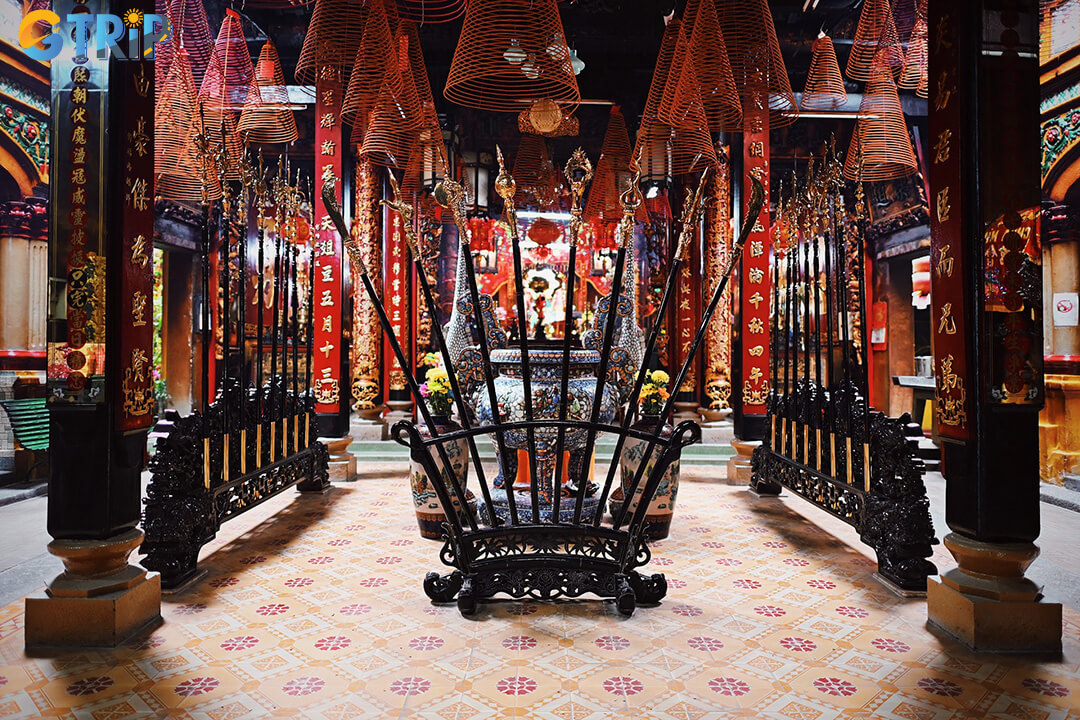
Built in 1902 by the Fujianese Minh Huong community, Phuoc An Hoi Quan Pagoda served both as a temple and a gathering place for Chinese immigrants in Saigon
Architecture of Phuoc An Hoi Quan Pagoda
The architecture of Phuoc An Hoi Quan Pagoda is a magnificent example of the traditional Fujian style, known for its opulence, bright colors, and masterful craftsmanship. The structure is built with a classic "noi cong ngoai quoc" layout, featuring internal courtyards that create a sense of harmony and separation from the outside world. The most striking feature is its multi-layered roof, adorned with vibrant, glazed ceramic tiles. The roof ridges are decorated with elaborate porcelain dioramas depicting figures from Chinese legends, historical epics, and folkloric tales.
The temple's frame is constructed from precious wood, with pillars and beams covered in intricate carvings and gilded with gold. Red, the color of luck, and gold, the color of prosperity, dominate the color palette. As you walk through the three main halls, you'll notice a seamless flow designed for worship rituals. The open-air courtyard allows sunlight and rain to enter, symbolizing the connection between heaven and earth, and is essential for ventilating the heavy incense smoke that fills the sacred space.
Things to do at Phuoc An Hoi Quan
Step inside Phuoc An Hoi Quan Pagoda, and you’ll enter a world where faith, artistry, and centuries-old traditions intertwine. This vibrant Taoist temple is a living museum of cultural heritage, filled with intricate carvings, symbolic imagery, and the lingering scent of incense that speaks to generations of devotion.
Learn about Taoist traditions and Quan Cong worship
A visit to Phuoc An Hoi Quan Pagoda is a deep dive into the living practice of Taoism and Chinese folk religion. The central focus is the worship of Quan Cong, whose imposing statue commands the main altar. Take time to understand his significance beyond just being a warrior. To his devotees, he embodies the core Taoist principles of balance and righteous action. Merchants and entrepreneurs pray to him for fair dealings and protection against betrayal, believing his righteous spirit will guide them to prosperity through honorable means.
Observe how his image is presented, often with a red face symbolizing loyalty and a long beard. He is typically flanked by his two most loyal companions: his adopted son Guan Ping, a symbol of filial piety, and his weapon-bearer Zhou Cang, a symbol of steadfast allegiance. Learning about this divine trio provides a richer context for the rituals you will witness. Understanding why this 3rd-century general is still a central figure in 21st-century commerce and community life reveals the enduring power of Taoist traditions in modern Vietnam.

Discover Taoist faith at Phuoc An Hoi Quan Pagoda, where worship of Quan Cong embodies loyalty, justice, and balance
Admire the intricate carvings and incense coil decorations
The visual details within Phuoc An Hoi Quan Pagoda are a feast for the eyes and a testament to the incredible skill of its artisans. Look closely at the structural elements; the wooden pillars, beams, and altar frames are covered in elaborate carvings. These carvings depict auspicious symbols and legendary scenes, dragons chasing pearls, phoenixes heralding peace, and epic tales from Chinese lore. The stone carvings, particularly around the entrance and on the pillar bases, are equally detailed, often showing lions and qilins guarding the sacred space.
One of the most captivating sights is the collection of massive, conical incense coils hanging from the ceiling. These coils, which can burn for several weeks, are purchased by devotees as offerings. Attached to each coil is a red or yellow prayer slip, bearing the name of the family or business and their specific wishes for things like health, prosperity, academic success, or safe travels. The slow-burning coils represent a long-lasting prayer, ensuring the devotee's intentions linger within the sacred space long after they have left.
Capture beautiful photos of the temple’s vibrant interiors
For photographers, Phuoc An Hoi Quan Pagoda is a treasure trove of color, texture, and atmosphere. The temple’s design naturally creates dramatic and beautiful photo opportunities. One of the best shots is from the main courtyard, looking up. Sunlight often filters down through the incense smoke, creating ethereal rays of light that illuminate the space. This interplay of light and shadow, known as "god rays", makes for stunningly atmospheric photographs. The vibrant interiors provide a rich and colorful backdrop, perfect for capturing the essence of the temple.
Focus your lens on the details that tell a story. Capture the contrast between the bright red prayer slips and the dark, aged wood of the rafters, the gilded characters on ceremonial plaques, and the intricate patterns on the ceramic roof tiles. The main altar of Quan Cong, with its ornate carvings, golden accessories, and offerings of fruit and flowers, is a fantastic subject. Frame your shots to include the layers of the temple to create a sense of depth. Remember to be respectful and avoid using flash, which can damage the delicate artifacts and disturb worshippers.
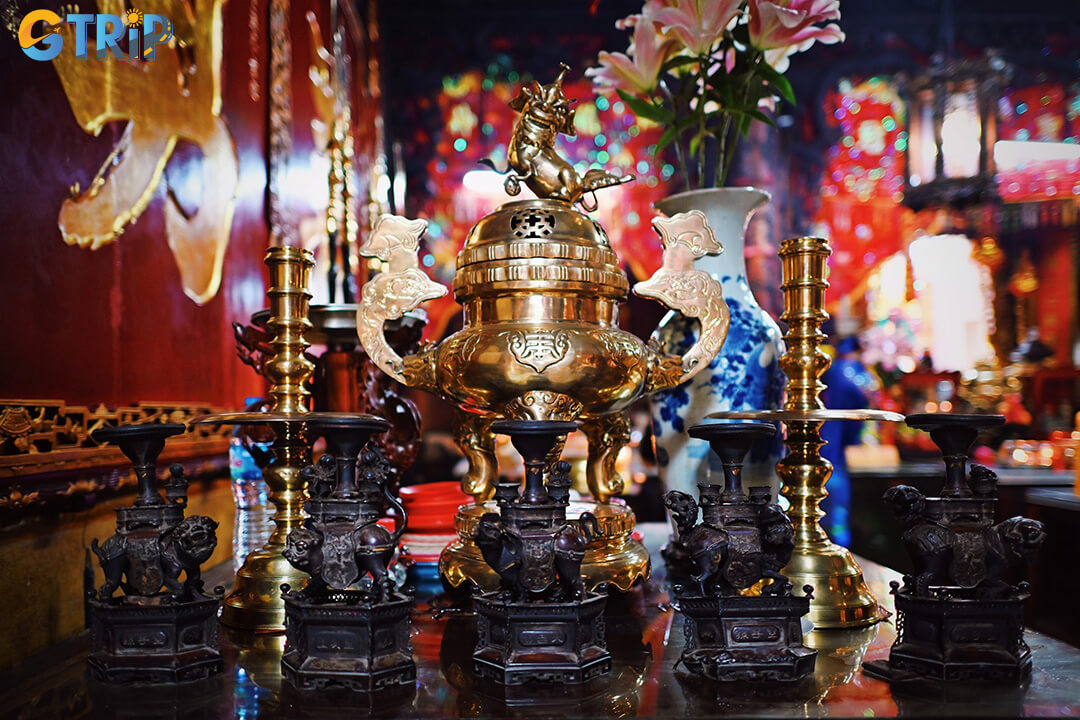
Phuoc An Hoi Quan is a visual gem, where incense light, vivid colors, and ornate details create stunning photo opportunities capturing the temple’s serene beauty
How to get to Phuoc An Hoi Quan Pagoda
Located on a major street in Cho Lon, the pagoda is easily accessible. Here are the best ways to get there:
- By taxi or ride-hailing app (Grab/XanhSM/Be): This is the most convenient option. Simply enter "Phuoc An Hoi Quan" or the address "184 Hong Bang" into the app. The driver will take you directly to the entrance. From former District 1, the ride typically takes 20-30 minutes, depending on traffic.
- By motorbike: If you're comfortable navigating the city's traffic, renting a motorbike gives you the flexibility to explore Cho Lon at your own pace. There is usually street-side parking available near the pagoda.
- By bus: Several public bus routes pass by or near the pagoda. Look for buses that stop at Cho Ray Hospital, which is just a short walk away. This is the most budget-friendly option, but it requires some familiarity with the local bus system.
Nearby attractions to Phuoc An Hoi Quan Pagoda in the former District 5
Phuoc An Hoi Quan Pagoda is located in the heart of Cho Lon, making it the perfect starting point for a walking tour of Saigon's historic Chinatown. Combine your visit with these nearby attractions:
- Saigon’s Chinatown: Just steps away, this traditional market is a bustling hub of local life. While smaller than its famous neighbor, Binh Tay Market, it offers an authentic experience where you can find everything from fresh produce and fabrics to household goods.
- Quan Am Pagoda: One of the oldest temples in Ho Chi Minh City, this beautiful pagoda is dedicated to the Goddess of Mercy. It’s known for its serene atmosphere and stunning rooftop ceramics.
- Thien Hau Pagoda: Perhaps Cho Lon's most famous temple, it's dedicated to Mazu, the Goddess of the sea. A must-visit for its spectacular incense coils, intricate dioramas, and deep cultural significance to the Cantonese community.
- Binh Tay Market: The central market of Chinatown, designed by a French architect. It’s a massive wholesale hub with a beautiful clock tower and central courtyard, offering fantastic insight into the commercial spirit of the area.
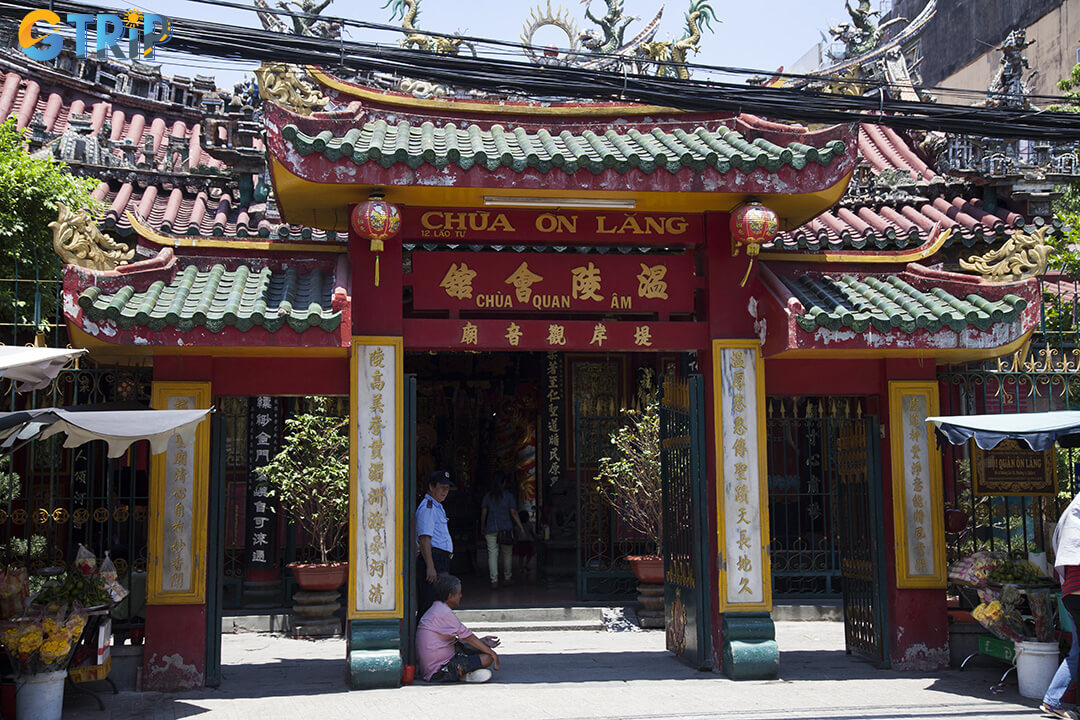
Located in the heart of Cho Lon, Phuoc An Hoi Quan is the ideal starting point to explore Saigon’s historic Chinatown and its nearby temples and markets
Practical tips for visiting Phuoc An Hoi Quan Pagoda
To ensure a respectful and enjoyable visit, keep these simple tips in mind. The pagoda is an active place of worship, so sensitivity is key.
- Dress modestly: As with all temples in Vietnam, cover your shoulders and knees. Avoid wearing shorts, short skirts, or tank tops.
- Be respectful of worshippers: This is not just a tourist site. Speak in a quiet voice and avoid disrupting people who are praying or making offerings.
- Photography etiquette: Photography is generally allowed, but never use a flash, as it can damage the ancient artefacts. Always be mindful and ask for permission before taking close-up photos of individuals.
- Follow the flow: Traditionally, visitors enter through the right door and exit through the left. Avoid walking through the central door, which is often reserved for deities.
- Mind your step: Do not step on the door sills (the raised wooden thresholds), as they are believed to house guardian spirits. Step over them.
Phuoc An Hoi Quan Pagoda is a vibrant, living monument to faith, community, and history. Each detail, from the image of Quan Cong to the prayers of worshippers, carries echoes of faith and tradition. Its stunning architecture and serene spirituality make it a must-visit for those seeking deeper insight into Ho Chi Minh City’s culture. It stands as a powerful reminder of the enduring legacy of the Chinese community in forging the identity of Saigon. Add this historic gem to your Ho Chi Minh City itinerary and immerse yourself in the rich culture of Cho Lon with GTrip - Vietnam Travel Agency.

